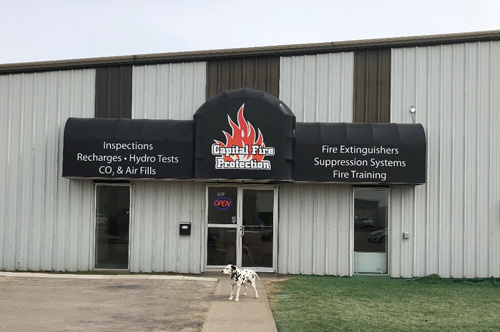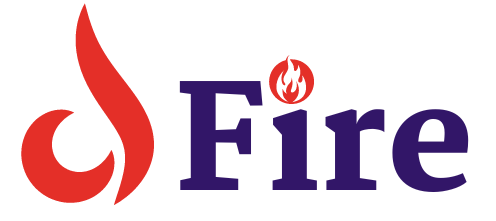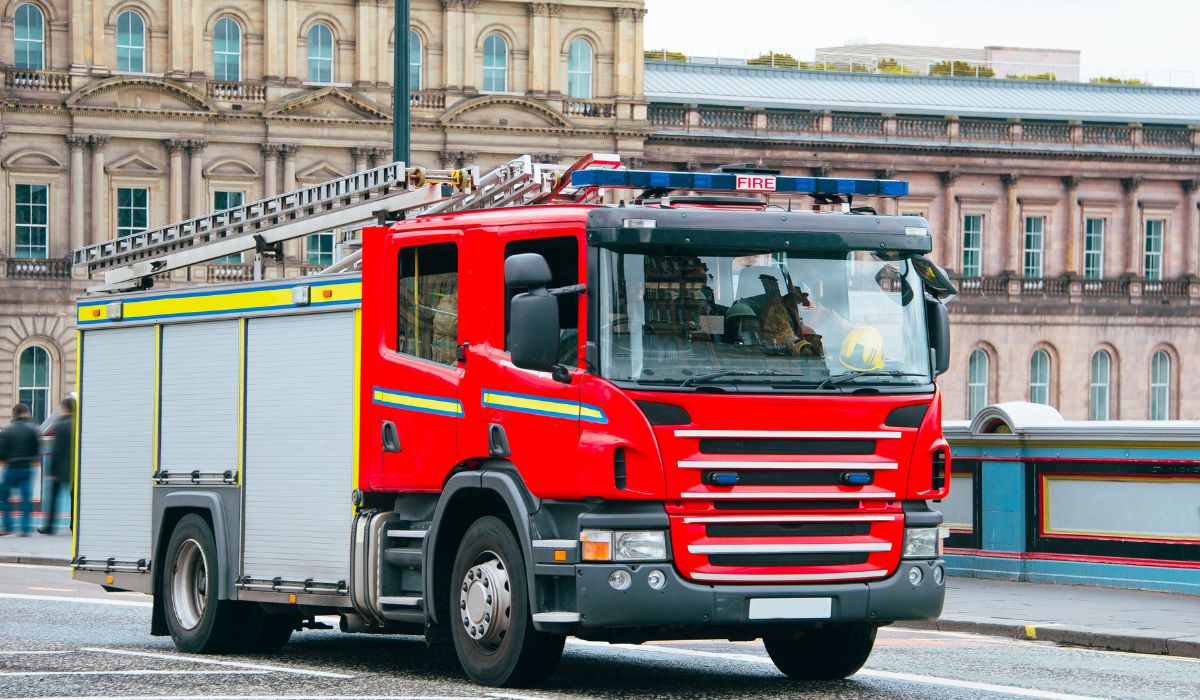Capital Fire Safety ensures optimal protection by providing expert fire prevention and safety solutions. Their services include fire risk assessments, equipment installation, and compliance training.
Fire safety is crucial for safeguarding lives and property. Capital Fire Safety specializes in delivering comprehensive fire prevention and safety services. Their team offers detailed fire risk assessments to identify potential hazards. They also provide installation of essential fire safety equipment like alarms and extinguishers.
Compliance training ensures that staff are well-prepared to handle emergencies. With a focus on reliability and expertise, Capital Fire Safety helps businesses and homes meet regulatory standards. Investing in professional fire safety services can prevent disasters and ensure a safe environment for everyone.
Importance Of Fire Safety
Fire safety saves lives and protects property. It helps prevent injuries and deaths. Fire safety measures reduce the risk of fires starting. They also help contain fires quickly.
Impact On Lives
Fires can cause serious injuries. People may suffer burns and smoke inhalation. Sometimes, fires even lead to loss of life. Children and the elderly are especially at risk. Fire safety practices can prevent these tragedies.
Economic Consequences
Fires can destroy homes and businesses. The costs of repairs are often high. Insurance may not cover all damages. Businesses may close, affecting jobs and income. Fire safety reduces these economic impacts.
| Impact | Details |
|---|---|
| Lives | Injuries, deaths, and emotional trauma |
| Economic | Property damage, business losses, insurance costs |
- Install smoke alarms
- Keep fire extinguishers handy
- Plan and practice escape routes
Fire Safety Regulations
Ensuring fire safety in buildings is crucial. Fire safety regulations help protect lives and property. These regulations include local codes and national standards.
Local Codes
Local codes vary by city and state. They address specific fire safety needs. Local governments enforce these codes. They ensure buildings meet fire safety requirements.
- Fire alarms installation
- Proper exit signs
- Fire extinguishers placement
- Regular fire drills
Local codes also include building material regulations. They specify fire-resistant materials. These materials reduce fire risks.
National Standards
National standards provide a uniform fire safety framework. These standards are often broader than local codes. They apply to various building types.
The National Fire Protection Association (NFPA) is a key organization. They create and update fire safety standards. NFPA 101, known as the Life Safety Code, is one example. It covers building design, construction, and occupancy.
| Standard | Focus |
|---|---|
| NFPA 101 | Life Safety Code |
| NFPA 25 | Water-based Fire Protection Systems |
| NFPA 72 | National Fire Alarm and Signaling Code |
Compliance with national standards is essential. It ensures a high level of fire safety. It also helps minimize fire-related damages and injuries.
Fire Prevention Measures
Effective fire prevention measures are crucial for ensuring safety in any setting. Implementing these measures can drastically reduce the risk of fires, safeguarding lives and property. Here, we explore essential steps for fire prevention.
Regular Inspections
Conducting regular inspections is a vital part of fire safety. Inspections help identify potential hazards before they become serious issues.
- Check fire alarms and extinguishers monthly.
- Inspect electrical wiring and outlets for damage.
- Ensure emergency exits are clear and accessible.
Regular checks ensure all safety equipment functions correctly. This reduces the risk of undetected hazards.
Safe Storage Practices
Safe storage practices are essential to prevent fires. Proper storage minimizes risks associated with flammable materials.
| Material | Storage Guidelines |
|---|---|
| Chemicals | Store in labeled, sealed containers away from heat. |
| Paper and Textiles | Keep in dry, cool areas away from electrical sources. |
| Flammable Liquids | Use approved safety cans and store in ventilated areas. |
Following these guidelines reduces fire risks significantly. Always label and organize storage areas properly.

Credit: www.capitolfireprotection.biz
Fire Detection Systems
Fire detection systems are essential for keeping homes and businesses safe. They alert you to the presence of fire or smoke early. This early warning can save lives and property. Two main types of fire detection systems are smoke alarms and heat detectors. Let’s explore these systems in detail.
Smoke Alarms
Smoke alarms detect smoke particles in the air. They are the most common type of fire detection system. There are two main types of smoke alarms:
- Ionization Smoke Alarms
- Photoelectric Smoke Alarms
Ionization smoke alarms are good at detecting flaming fires. They work by using a small amount of radioactive material. This material ionizes the air, creating a current between two plates. When smoke enters the chamber, it disrupts the current, triggering the alarm.
Photoelectric smoke alarms are better at detecting smoldering fires. They use a light source and a sensor. When smoke enters the chamber, it scatters the light, which hits the sensor and triggers the alarm.
Heat Detectors
Heat detectors sense temperature changes. They are less prone to false alarms compared to smoke alarms. There are two main types of heat detectors:
- Fixed Temperature Heat Detectors
- Rate-of-Rise Heat Detectors
Fixed temperature heat detectors activate when the temperature reaches a preset level. This level is usually around 135°F (57°C).
Rate-of-rise heat detectors trigger when the temperature increases rapidly. They are useful in areas where sudden temperature changes occur.
Both types of heat detectors are ideal for kitchens, garages, and dusty areas. They provide an added layer of protection where smoke alarms might not be suitable.
Fire Suppression Systems
Fire suppression systems are crucial for safeguarding lives and property. These systems detect and extinguish fires quickly, minimizing damage. Various types of fire suppression systems are available. Each type has its unique features and benefits.
Sprinkler Systems
Sprinkler systems are among the most common fire suppression systems. They are often found in commercial buildings and residential properties. When a fire is detected, the heat activates the sprinkler heads. Water is then released to douse the flames.
Sprinkler systems are effective because they work automatically. They provide an immediate response to a fire outbreak. Here are some key features of sprinkler systems:
- Automatic activation upon detecting heat
- Wide coverage area
- Low maintenance
- Cost-effective
| Feature | Description |
|---|---|
| Automatic Activation | Sprinklers activate automatically when heat is detected. |
| Wide Coverage | They cover large areas effectively. |
| Low Maintenance | Require minimal maintenance once installed. |
| Cost-Effective | Affordable and efficient for most buildings. |
Fire Extinguishers
Fire extinguishers are portable devices that help control small fires. They are essential in both homes and workplaces. Fire extinguishers come in various types, each suited for different kinds of fires.
Here are the primary types of fire extinguishers:
- Water Extinguishers: Best for Class A fires involving wood and paper.
- Foam Extinguishers: Suitable for Class A and B fires involving flammable liquids.
- CO2 Extinguishers: Ideal for electrical fires.
- Dry Powder Extinguishers: Versatile for Class A, B, and C fires.
Fire extinguishers are easy to use. Remember the PASS method:
- P – Pull the pin
- A – Aim the nozzle at the base of the fire
- S – Squeeze the handle
- S – Sweep from side to side
Having a fire extinguisher within reach can save lives. Ensure everyone knows how to use one.

Emergency Evacuation Plans
Emergency evacuation plans are crucial for every building. They ensure the safety of all occupants. Knowing the steps to evacuate can save lives. Below are some key elements of a well-designed plan.
Exit Routes
Exit routes must be clear and accessible. These routes guide people to safety during an emergency. They should be well-lit and marked with signs. Here’s a list of key points to remember:
- Keep exit routes free of obstructions.
- Ensure all doors along the route open easily.
- Use glow-in-the-dark signs for visibility in low light.
- Regularly check the condition of all exit signs.
These measures help everyone find their way out quickly and safely.
Meeting Points
Meeting points are safe areas where people gather after evacuating. These points help in accounting for all occupants. It’s important to choose locations that are far from the building. Here are some tips for setting up meeting points:
| Criteria | Description |
|---|---|
| Distance | At least 50 meters away from the building. |
| Safety | Free from traffic and other hazards. |
| Accessibility | Easy for everyone to reach, including those with disabilities. |
Assign team leaders to oversee groups at these points. Use walkie-talkies or mobile phones to communicate.
Well-organized meeting points ensure everyone is safe and accounted for.
Fire Safety Training
Fire Safety Training is crucial for any workplace. It ensures the well-being of employees and the protection of property. Effective fire safety training can significantly reduce the risk of fire-related incidents.
Employee Drills
Regular employee drills are essential. They help staff know what to do in an emergency. These drills include evacuation routes, assembly points, and the use of fire extinguishers. Here are some key components of effective employee drills:
- Clear and marked evacuation routes
- Designated assembly points
- Proper use of fire extinguishers
During drills, employees should practice staying calm and following instructions. Regular practice makes real emergencies less chaotic.
First Aid Training
First aid training is another important aspect of fire safety. It prepares employees to handle injuries during a fire. Key elements of first aid training include:
| First Aid Skill | Importance |
|---|---|
| CPR (Cardiopulmonary Resuscitation) | Restores breathing and circulation |
| Burn Treatment | Reduces pain and prevents infections |
| Bleeding Control | Stops excessive blood loss |
Providing first aid training can save lives in critical situations. It empowers employees to act swiftly and effectively.
Maintenance Of Fire Safety Equipment
Ensuring the proper maintenance of fire safety equipment is crucial for everyone’s safety. Regular upkeep guarantees that these tools function when needed most. This section covers the importance of routine checks and professional servicing.
Routine Checks
Routine checks are vital to ensure fire safety equipment is in good condition. These checks should be done by staff or designated persons weekly or monthly. Simple tasks like inspecting fire extinguishers, checking smoke alarms, and examining fire hoses can prevent potential failures.
- Fire Extinguishers: Ensure the pressure gauge is in the green zone.
- Smoke Alarms: Test alarms by pressing the test button.
- Fire Hoses: Check for any visible damage or leaks.
Professional Servicing
Professional servicing is essential for in-depth maintenance and repairs. Experts can identify issues that may be missed during routine checks. They also ensure compliance with local regulations.
Professional service providers offer comprehensive inspections and testing. They check each piece of equipment meticulously and provide a detailed report. This ensures all fire safety tools are up to standard.
| Service | Frequency |
|---|---|
| Fire Extinguisher Inspection | Annually |
| Smoke Alarm Testing | Bi-Annually |
| Fire Hose Testing | Annually |
In summary, maintaining fire safety equipment through routine checks and professional servicing is crucial. This ensures the equipment works effectively during emergencies.

Credit: capitalfireprotection.ca
Frequently Asked Questions
Who Bought Fire Life Safety America?
Blue Point Capital Partners acquired Fire & Life Safety America. The acquisition took place in 2018.
Is A Fire Extinguisher A Capital Item?
Yes, a fire extinguisher is a capital item. It is considered durable equipment and has a long-term use.
What Is The Rule Of Fire Safety?
The rule of fire safety includes: identifying hazards, maintaining clear exits, installing alarms, having extinguishers, and conducting regular drills.
What Fire Code Does Arizona Use?
Arizona uses the 2018 International Fire Code with local amendments. This code ensures fire safety standards across the state.
Conclusion
Prioritizing fire safety ensures the well-being of everyone in your building. Regular inspections and maintenance are crucial. Implementing proper fire safety measures can save lives and property. Stay informed and proactive about fire prevention techniques. Remember, a safe environment benefits everyone.
Protect your capital by investing in comprehensive fire safety protocols.

I’m Abdus Sobur, a highly skilled and professional Fire Safety Officer with a passion for safeguarding lives and property. Over the course of my career, I’ve conducted numerous successful fire safety audits, earning a reputation for excellence in ensuring public safety.
In addition to my role as a Fire Safety Officer, I’m also dedicated to raising awareness about the importance of fire safety. Through my blog, I share insights into the functions of different fire safety equipment, aiming to empower individuals with the knowledge they need to protect themselves and their communities.
I’m driven by a deep commitment to promoting fire safety awareness and preventing fire-related incidents.

